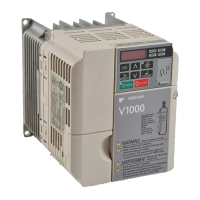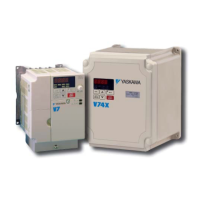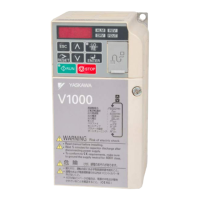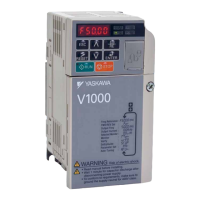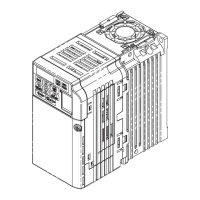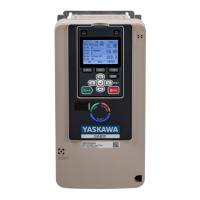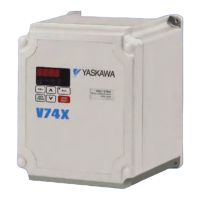u
n3: High Slip Braking
High Slip Braking (HSB) is a method of decreasing the stopping time of a load without using dynamic braking. The regenerated energy of the decelerating
load is dissipated in the motor windings through increased motor slipping. Because of the increased temperature of the motor windings, there is a limitation
on the occurrence of HSB usage (~5% duty cycle).
The deceleration time is disregarded during HSB.
Braking time varies based on the load inertia and motor characteristics.
Note: High Slip Braking is only possible when using V/f Control. Due to the increased temperature created in the motor windings, there is a limitation on the occurrence of HSB
usage. When a HSB command is given, it is not possible to restart the drive until the motor is stopped and the Run command is cycled.
n
n3-01: High Slip Braking Deceleration Frequency Width
Sets how aggressively the drive decreases the output frequency as it stops the motor using high slip braking (HSB).
No. Parameter Name Setting Range Default
n3-01 High Slip Braking Deceleration Frequency Width 1 to 20 5%
n
n3-02: High Slip Braking Current Limit
Sets the maximum current to be output during an HSB stop as a percentage of motor rated current (E2-01). Make sure that this value does not exceed
150% of the drive’s current rating.
No. Parameter Name Setting Range Default
n3-02 High Slip Braking Current Limit 100 to 200 150%
n
n3-03: High Slip Braking Dwell Time at Stop
Sets the time that the output frequency should remain constant with the minimum output frequency set to E1-09.
Note: Possible only when using V/f Control. Enabled only during High Slip Braking.
No. Parameter Name Setting Range Default
n3-03 High Slip Braking Dwell Time at Stop 0.0 to 10.0 1.0 s
n
n3-04: High Slip Braking Overload Time
Sets the time required for an HSB overload fault (OL7) to occur when the drive output frequency does not change for some reason during an HSB stop.
The overload fault oL1 is not affected by n3-04.
No. Parameter Name Setting Range Default
n3-04 High Slip Braking Overload Time 30 to 1200 40 s
n
n3-13: Overexcitation Deceleration Gain
Improves the ability of the drive to perform linear deceleration when L3-04 = 4. Increase the gain to shorten the deceleration time.
• Returns to the normal values after ramp to stop, re-acceleration, and stop (DB, BB).
• To improve the breaking power of overexcitation, increase the gain by 1.25 to 1.30.
The optimum setting for n3-04 depends on the motor flux saturation characteristics.
Parameters n3-13, n3-21, and n3-23 are enabled only when using V/f Control or Open Loop Vector Control.
The drive decelerates at the specified time.
This function allows the drive to abandoned deceleration and start accelerating back up to a specified speed.
No. Parameter Name Setting Range Default
n3-13 Overexcitation Deceleration Gain 1.00 to 1.40 1.10
n
n3-21: Overslip Suppression Current Level
If overcurrent, OL1, or OL2 occur during overslip deceleration, reduce the overslip suppression current level. Set as a percentage of the drive rated current.
No. Parameter Name Setting Range Default
n3-21 Overslip Suppression Current Level 0 to 150 100%
Note: If the motor current exceeds the overexcitation supression current level set to n3-21 during overexcitation deceleration, then try returning the setting to what they were before.
The problem is the result of flux saturation in the motor. Another possible solution is to try reducing the overexcitation gain set to n3-13.
n
n3-23: Overexcitation Operation Selection
Set this parameter to determine whether overexcitation can work in only one direction or not. This is helpful for having overexcitation apply only when
motoring or only during regeneration. Because the flux level increases by the gain set by n3-13 during the overexcitation operation, regenerative energy
is consumed in the motor. This allows enough regen torque to be output that a braking resistor is not needed.
Note: Operating the drive with overexcitation can trigger oL1. If overvoltage continues to occur even with this function enabled, try using a braking resistor instead. Disabled this
function when using a braking resistor.
No. Parameter Name Setting Range Default
n3-23 Overexcitation Operation Selection 0 to 2 0
0 Disabled
1 Enabled only when rotating forwards
5.9 n: Special Adjustments
202
YASKAWA ELECTRIC SIEP C710606 18A YASKAWA AC Drive – V1000 Technical Manual (Preliminary)

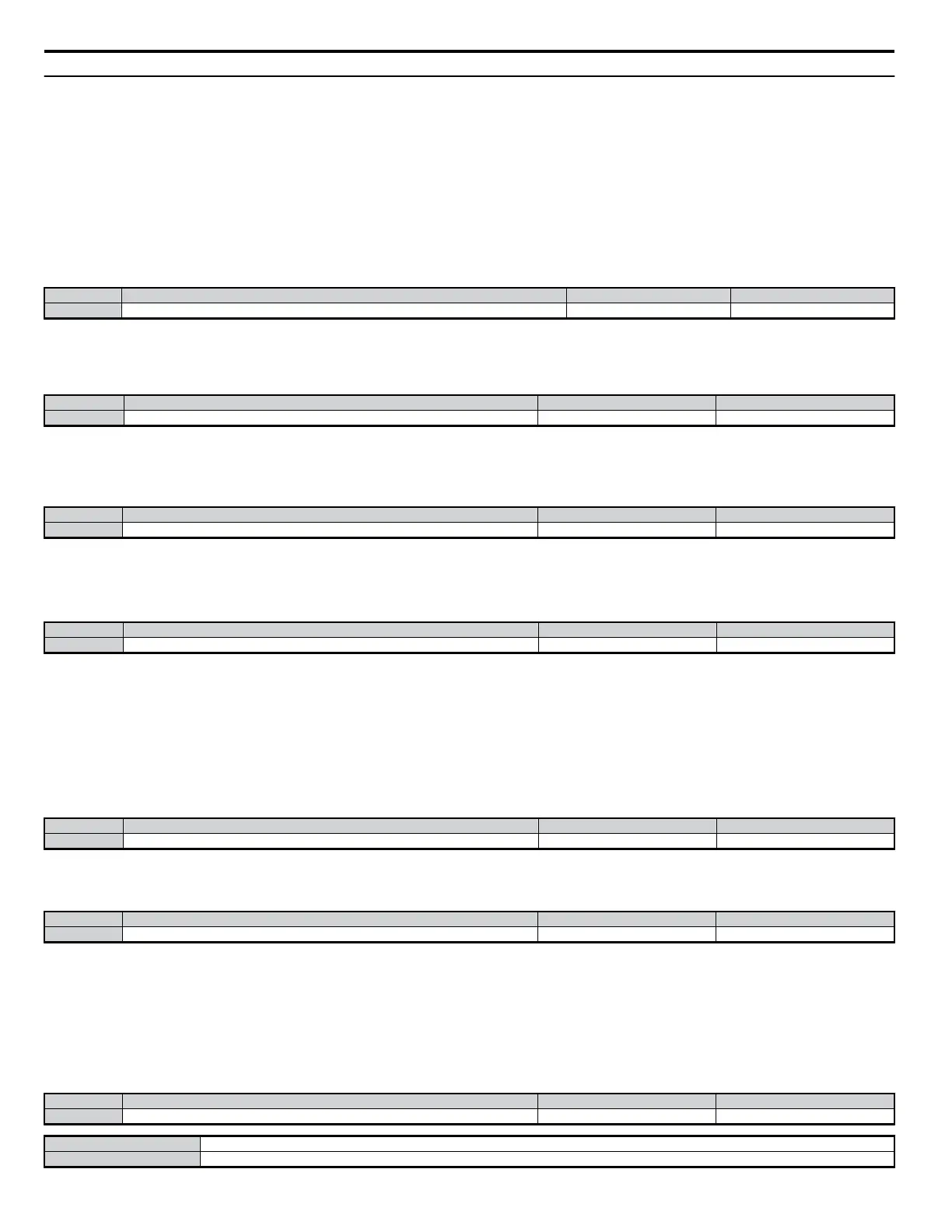